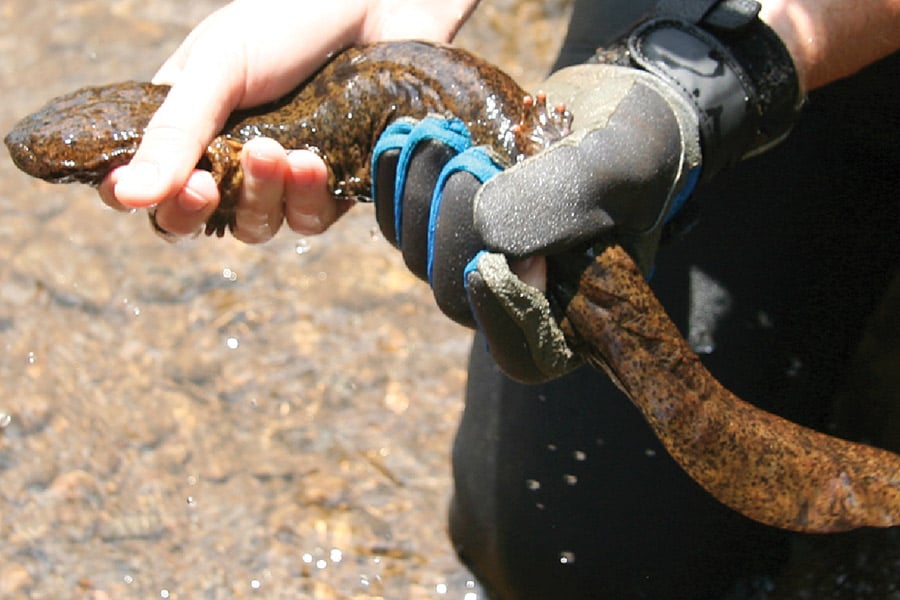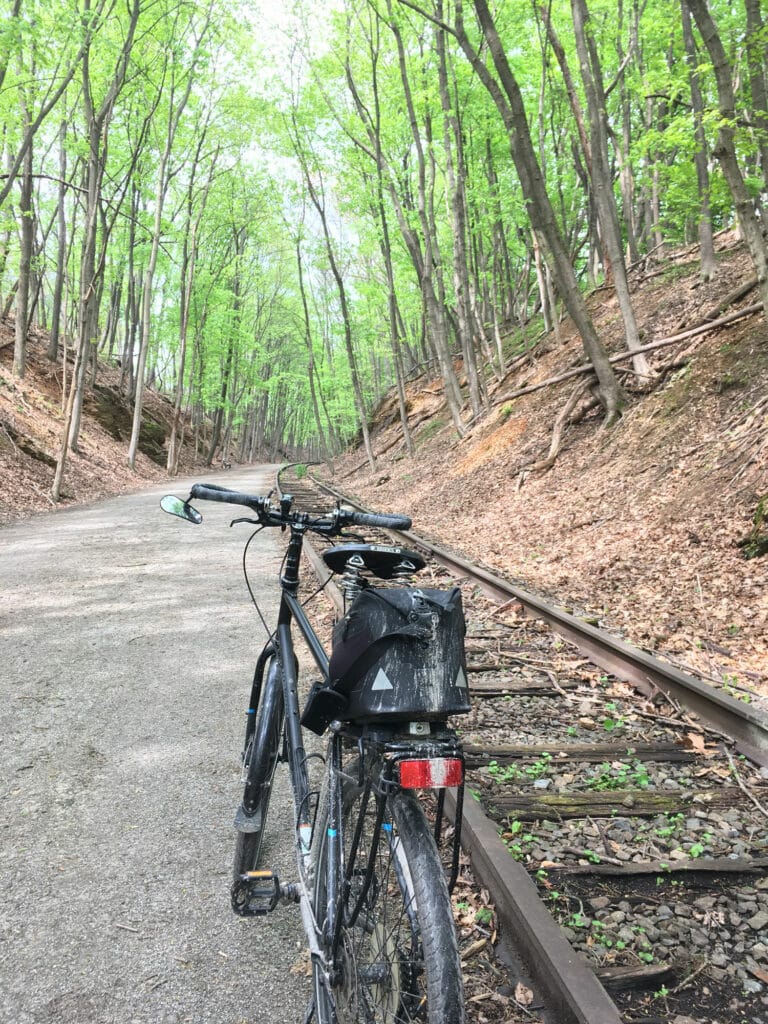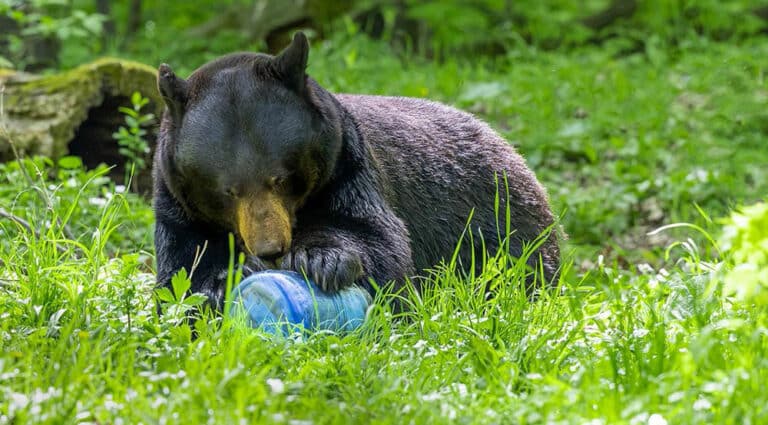By Emily Hornsby
More hellbenders make this region their home than anywhere else in the world. Like many of their human neighbors, they are drawn to the clear, cold, quiet streams that are so prolific in these mountains.
Growing up to two feet long and boasting such nicknames as snot-otter, grampus, and devil dog, the hellbender salamander sounds like a mythical swamp monster from a poorly scripted sci-fi movie. Some claim the hellbender’s name was inspired by its decidedly devilish appearance or the odd contortions of which its body is capable. Others believe the name originates from the aggressive way in which males will battle over their territory.
Though hellbenders live right under our noses, these giant elusive salamanders are rarely seen. Sadly, this is a result of more than just the creature’s nocturnal habits and excellent camouflaging abilities. The population and health of the hellbender has drastically declined over the past half-century. The salamander’s highly permeable skin and specific habitat requirements have left it particularly susceptible to water pollution and excess silt from human development. It’s now classified on the endangered species list as a species of special concern.
“Hellbenders have been a part of healthy stream ecosystems for millions of years,” says Lori Williams, wildlife biologist for the state of North Carolina. “They are a part of our Appalachian mountain heritage, our natural history, and even our cultural history.” Hellbenders were used by Native Americans and even considered sacred.
Hellbenders do not have any impact on fishing, but they do live under rocks in some of our most prized trout waters, so be careful not to disturb rocks when wading.
In recent years, the hellbenders have been dwindling in number, decreasing in average size, displaying physical deformities, and acquiring skin diseases. Its high sensitivity to changes in river ecosystems makes it an important indicator of overall ecological and environmental health. And for an animal whose welfare is so closely tied to that of this region, the changes do not bode well for the health of our shared mountain home or any of its inhabitants, including us.
Wild South, a leading regional conservation organization, has teamed up with the North Carolina Wildlife Resources Commission, the U.S. Forest Service, and Warren Wilson College to combat the hellbender’s decline. They are building “hellbender huts,” artificial nests constructed from concrete and PVC pipe, and installing them in streams across Appalachia. Biologists have already observed these bachelor pads being used by hellbenders for breeding.
“The most exciting aspect of this project is the fact that we are getting results,” says Ben Prater, conservation director at Wild South. “We are conserving habitats and species where it counts.”
While the hellbender huts are helpful, protecting the hellbender’s mountain stream ecosystems is the best way to help the species flourish, says Prater. The number one threat to hellbenders is sediment entering waterways. “We need the strongest standards possible for preventing pollution from entering our mountain streams.”








